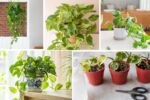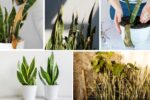If you’re looking to create a garden that’s not only beautiful but also a sanctuary for local wildlife, perennials are the perfect choice. These hardy plants return year after year, offering consistent food and shelter for birds, bees, butterflies, and other pollinators. Wildlife-friendly perennials help support essential ecosystems, increase biodiversity, and bring a lively, natural charm to your outdoor space. Here are 10 must-plant perennials that will turn your garden into a buzzing, fluttering, chirping haven of life.
1. Purple Coneflower (Echinacea purpurea)

A classic favorite in pollinator-friendly gardens, Purple Coneflower boasts large, daisy-like blooms with spiky orange centers and purple petals. Bees, butterflies, and even hummingbirds are drawn to its nectar-rich flowers, while seed-loving birds like goldfinches flock to the dried seed heads in fall. These hardy perennials thrive in full sun and well-drained soil, blooming from mid-summer to fall. Besides supporting wildlife, Purple Coneflowers add cheerful color and resilience to mixed borders, wildflower meadows, and cottage gardens.
2. Bee Balm (Monarda didyma)

Known for its shaggy, fragrant blooms in shades of red, pink, and purple, Bee Balm is a magnet for hummingbirds, bees, and butterflies. Its tubular flowers are perfectly shaped for pollinators with long tongues, and its aromatic foliage adds extra sensory appeal. Bee Balm thrives in sunny, moist spots and blooms profusely from mid to late summer. It also makes a lovely cut flower and can be used in herbal teas. Cut it back after flowering to encourage a second bloom.
3. Black-Eyed Susan (Rudbeckia hirta)

These cheerful, golden-yellow flowers with dark, button-like centers are synonymous with sunny, wildlife-friendly gardens. Black-Eyed Susans attract butterflies, bees, and other beneficial insects with their nectar-rich blooms, while birds feed on the dried seed heads in autumn. Drought-tolerant and easy to grow, they thrive in full sun and average soil. Their long-lasting blooms add bright pops of color from mid-summer through fall, making them ideal for borders, prairies, and naturalized areas.
4. Milkweed (Asclepias spp.)

Milkweed is an essential plant for supporting Monarch butterflies, serving as both a nectar source and the sole food plant for Monarch caterpillars. With fragrant clusters of pink, orange, or white flowers, Milkweed also attracts bees, hummingbirds, and other butterfly species. Native varieties like Common Milkweed (Asclepias syriaca) or Butterfly Weed (Asclepias tuberosa) thrive in full sun and well-drained soil. Leave seed pods intact for winter interest and food for seed-eating birds.
5. Joe-Pye Weed (Eutrochium purpureum)

This towering native perennial features fluffy, mauve-pink flower clusters that bloom from midsummer to early fall. Joe-Pye Weed is a favorite of butterflies, particularly swallowtails and Monarchs, while bees flock to its nectar. Thriving in moist, sunny spots or part shade, this plant can grow 5-7 feet tall, making it perfect for naturalized borders or pond edges. Its striking height and late-season blooms ensure your garden remains lively and colorful as summer winds down.
6. Yarrow (Achillea millefolium)

Yarrow’s flat, umbrella-like flower heads and feathery foliage bring texture and pollinator activity to any garden. Available in shades of white, yellow, pink, and red, Yarrow blooms from early summer to fall, providing a long-lasting nectar source for bees, butterflies, and hoverflies. Birds also use its foliage for nest-building. It’s drought-tolerant and thrives in sunny, well-drained spots. Cut flowers are excellent for drying, and frequent deadheading encourages extended blooming throughout the season.
7. Lupine (Lupinus spp.)

These stately, spiky flowers make a dramatic addition to any wildlife garden. Lupines attract bees, butterflies, and hummingbirds with their vertical clusters of pea-like blooms in blue, purple, pink, and white. As nitrogen-fixing plants, they also improve soil health. Native varieties like Wild Lupine (Lupinus perennis) are especially important for endangered species like the Karner Blue butterfly. Plant them in full sun with well-drained, sandy soil and enjoy their vibrant, early-summer display.
8. Blazing Star (Liatris spicata)

Blazing Star features tall, slender spikes of feathery purple or white flowers that bloom from the top down — a unique trait in the flower world. This native perennial is a butterfly magnet, particularly for Monarchs and painted ladies, while bees eagerly visit for nectar. Birds, like finches, enjoy its seeds in fall and winter. Thriving in full sun and well-drained soil, Blazing Star adds vertical interest and resilience to borders, meadows, and pollinator gardens.
9. Coreopsis (Coreopsis verticillata)

Also known as Tickseed, Coreopsis produces abundant, daisy-like flowers in bright yellow, orange, or red throughout the summer. Its long blooming period offers an essential nectar source for bees and butterflies, while small birds feast on its seeds in fall. Drought-tolerant and undemanding, Coreopsis thrives in sunny, well-drained areas. Deadheading encourages continuous blooms, and its cheerful, airy appearance brightens mixed borders, wildflower plantings, and container gardens alike.
10. Penstemon (Penstemon digitalis)

With tall spires of tubular flowers in shades of white, pink, purple, and red, Penstemon is a hummingbird favorite. Bees and butterflies also adore its nectar-rich blooms. This hardy perennial blooms from late spring to early summer, providing an early-season food source for pollinators. Its upright habit and glossy foliage add structure to perennial borders and wild gardens. Penstemon prefers sunny locations with well-drained soil and is highly drought-tolerant once established.



